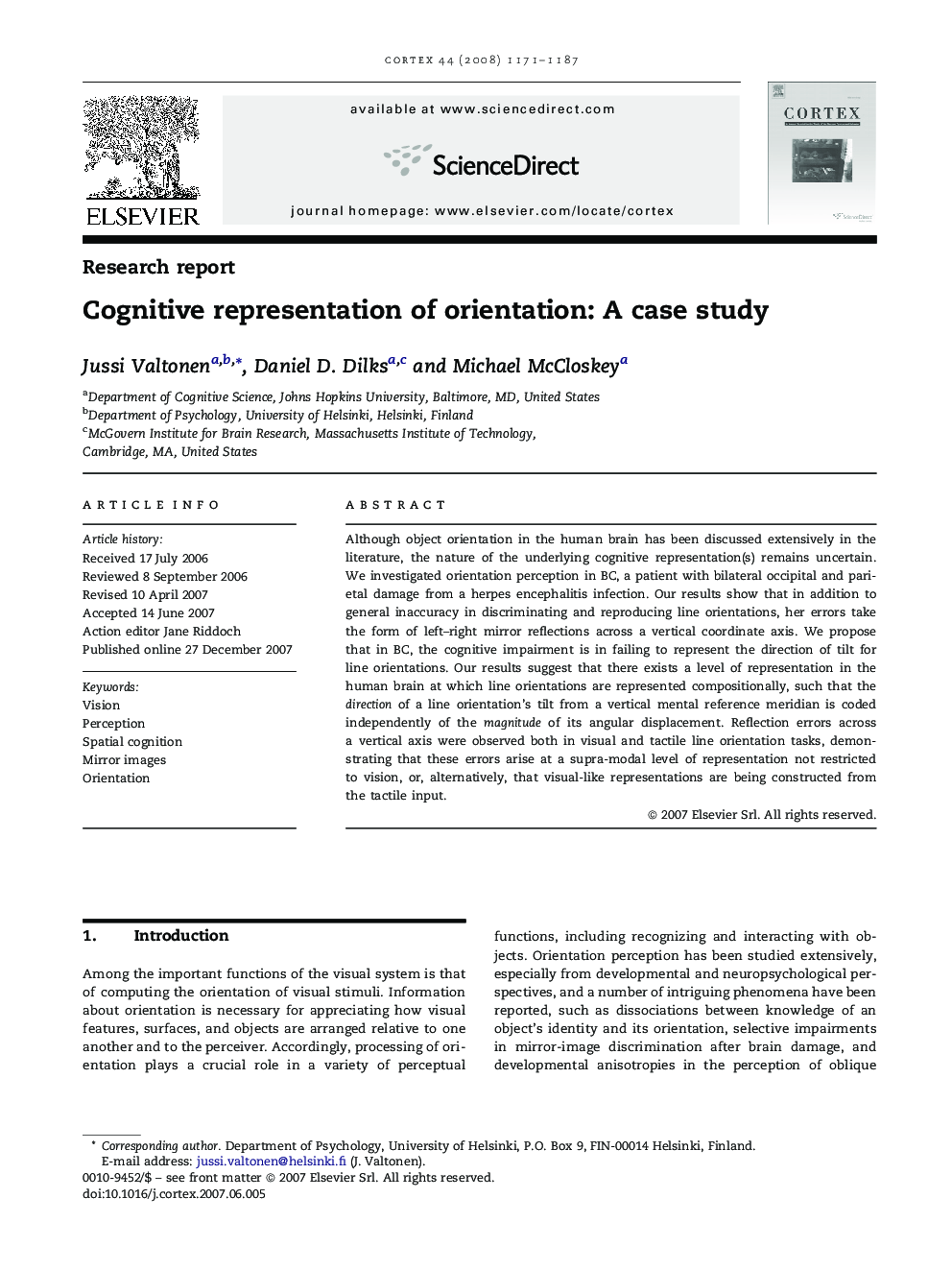| Article ID | Journal | Published Year | Pages | File Type |
|---|---|---|---|---|
| 10463418 | Cortex | 2008 | 17 Pages |
Abstract
Although object orientation in the human brain has been discussed extensively in the literature, the nature of the underlying cognitive representation(s) remains uncertain. We investigated orientation perception in BC, a patient with bilateral occipital and parietal damage from a herpes encephalitis infection. Our results show that in addition to general inaccuracy in discriminating and reproducing line orientations, her errors take the form of left-right mirror reflections across a vertical coordinate axis. We propose that in BC, the cognitive impairment is in failing to represent the direction of tilt for line orientations. Our results suggest that there exists a level of representation in the human brain at which line orientations are represented compositionally, such that the direction of a line orientation's tilt from a vertical mental reference meridian is coded independently of the magnitude of its angular displacement. Reflection errors across a vertical axis were observed both in visual and tactile line orientation tasks, demonstrating that these errors arise at a supra-modal level of representation not restricted to vision, or, alternatively, that visual-like representations are being constructed from the tactile input.
Related Topics
Life Sciences
Neuroscience
Behavioral Neuroscience
Authors
Jussi Valtonen, Daniel D. Dilks, Michael McCloskey,
